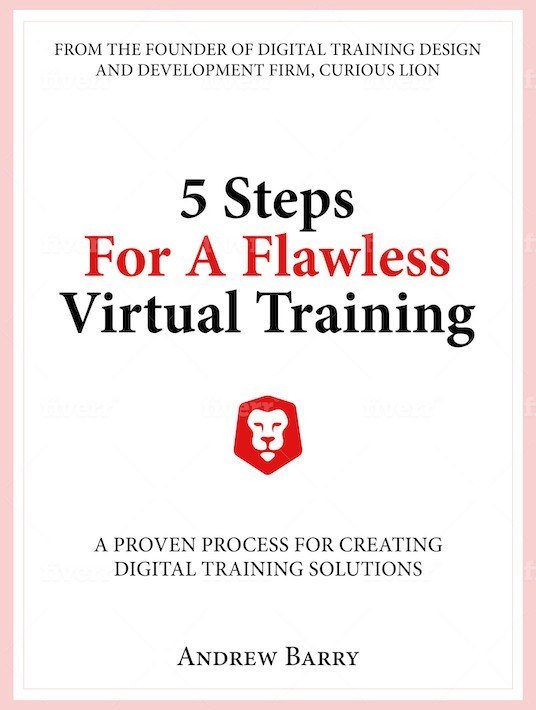Nobody Likes Boring Content
You need to make your content interesting if you are hoping to engage your learners. But this is not an easy task. In order to achieve this, there are various techniques you can use. These techniques are used by many professionals in all forms of art, and they are guaranteed to make your content more interesting by bringing out its best elements.

It is a simple matter of know-how and commitment, but if you follow this advice you will find your learners always coming back for more!
Craft A Narrative Flow To Make Your Content More Interesting
At Curious Lion, we believe that the best educators are storytellers because they imbue learning with imagination, teaching us to visualize and think about things instead of simply presenting us with information. Storytelling helps educators demonstrate ideas creatively, and it offers a handle to learners in understanding concepts. Storytelling is knowing that everything from your first to your last sentence is leading to a singular goal, in this case, the learning objective.
The elements of a great story include:
- A protagonist with goals
- Setting out on a journey
- Facing an unexpected obstacle
- Attempting to overcome the obstacle
- Climax conclusion
Apply Cognitive Theory For Multimedia Learning
Our minds respond well to multimedia inputs. Images convey information 60,000 times faster than words. Our brains are wired to receive information from multiple sources (i.e., be multi-modal). The best learning occurs when words and images are combined intentionally.
Luckily, we have the work of one of the most published researchers in online learning, Richard Mayer, to refer to for guidance in creating multimedia learning. His precise studies have confirmed that our mix of text, images, audio, animation, and video in online learning is often flawed, resulting in cognitive overload.
Using Video
If you are using video, follow filming guidelines for rapid video development to make your content more interesting.
Framing
Proper framing is one of the simplest hacks to instantly improve any learning video. Just follow the rule of thirds.
The rule of thirds teaches you to split your screen into thirds vertically and horizontally. Most cameras have a grid line setting to do this for you. Then you place the most relevant information at the intersection points of the grid lines. These points carry magnetic “weight” that naturally draws our eyes.
Create a pleasing effect for the viewer by placing focal points, such as the eyes of a person, at these intersection points.
Some additional considerations for framing:
- The edges of a frame are magnetic too. Objects too close to the edges will appear as if they’re being pulled out of the screen. Leave space between the edges of your frame and your subject.
- We read frames, just like text, from left to right. We pay more attention to the right of the screen (the last place our eye rests after a scan), so place your focal points there.
Background
The key to background is to create depth. Leave ample space behind your subject. You want to be able to focus on your subject while leaving a soft blur of the background behind them. Props and background tell a story so be intentional about what you place there.
Lighting
The classic lighting mistake is to point your camera at your subject with a light source behind them. If you want to show an outside location in your frame, position your subject at an angle, and balance the light from the window with artificial light from the opposite direction.
There are 3 things to remember here:
- Rely on natural light as much as possible
- Place the primary light source behind the camera
- Balance lighting across the frame to avoid shadows
Sound
Sound can be used to convey all kinds of information to support the dialogue.
There are also 3 simple rules here:
- Record any background noise for 10 seconds. This "noise print" can be used later in editing to remove the noise from your final cut.
- The subject and the microphone should be the same distance apart throughout. It may help to use a separate microphone from the one on your camera or phone. If you do this, make your editor's life easier by clapping your hands at the start of filming to aid in syncing.
- One more tip to help with editing: pause for longer than natural between takes.
Provide Ways For Learners To Practice In New Contexts
Behavior is shaped by its consequences; consistency and timing play important roles in shaping new behaviors. Complex behaviors are best learned via continuous reinforcement, in which the desired behavior is reinforced every time it’s performed.
These are the findings of Harvard professor of psychology B.F. Skinner.
Reinforce the behaviors you want learners to demonstrate by using scenarios and roleplays as ways to introduce new contexts in which to apply the knowledge they’re gathering. These are equally effective in online learning when using a blended approach that also considers offline reinforcement. More on this in the final steps.
Experiencing content in multiple ways also helps learners make meaningful connections between concepts, thus maximizing recall.
Incorporate group work into practice elements. Moving from the main class forum to a smaller group forum, which is often student-led, creates a less formal space and greater ease for connecting socially. When students communicate amongst themselves, they feel more at ease and equal to their peers.
What's Next?
The eBook 5 Steps For A Flawless Virtual Training is the go-to guide that will help you start and develop your virtual training program. This eBook is for anyone who is passionate about creating meaningful custom virtual learning experiences. Your culture matters. Your corporate values set you apart. Your virtual training should reflect that.









